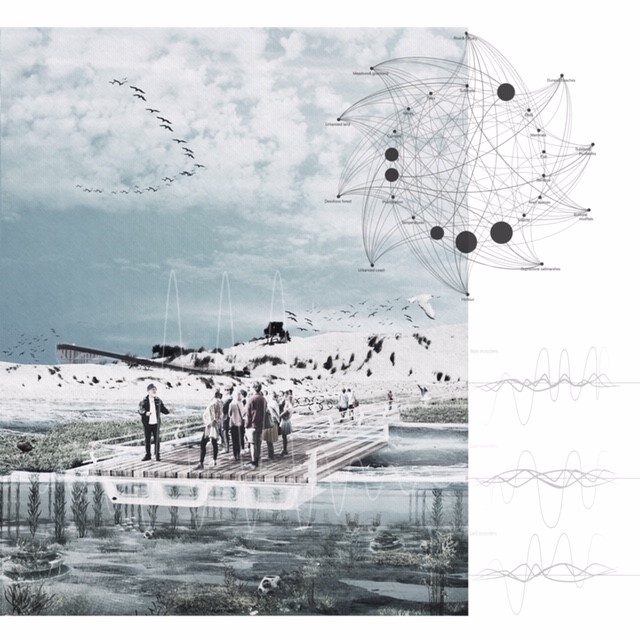Nicole Garcia Vogt
Urbanism

Synchronizing habitat
Risk adaptation by co- evolution of environment & society
The graduation project aims to regenerate the multi-equilibria state of marine ecosystems of the Weser Estuary (Germany) and develop an evolutionary adaptation through an ecosystem succession approach (Davoudi et al., 2013; Hale et al., 2009; Munang et al., 2013). This entails the gradual transformation of constantly obsolete infrastructures towards hybrid evolving systems consisting of Infrastructural Ecologies (Belanger, 2009; Brown, 2019; Reed & Lister, 2014). The idea was to use a mixture of soft and hard infrastructures that reintegrates the biodynamics of ecology, so that it could be colonized by socio-ecological elements. Hence the interplay of the anthropic designs and environmental processes would support the creation of habitats that allow a shared expansion space for dissimilar activities to meet (ecotone enhancement). To propose such infrastructures, it was necessary to understand the dynamics of the different marine ecosystems in terms of time cycles, longevity and interdependencies. The consideration of this temporal dimension of socio-ecological elements in the design allows the proposed changes to eventually be coupled to the pace of environmental processes. Thereafter ecosystems could be able to embrace climatic risk such as sea level and temperature rise and water pollution due to port activity, since these no longer present a hazard, but a trigger of transformation.